*NURSING > STUDY GUIDE > Pediatric Brain Tumor Case Study_ LATEST 2021/2022,100% CORRECT (All)
Pediatric Brain Tumor Case Study_ LATEST 2021/2022,100% CORRECT
Document Content and Description Below
Pediatric Brain Tumor Case Study_ LATEST 2021/2022 Scenario Z.O. is a 3-year-old boy with no significant medical history. He is brought into the emergency department (ED) by the emergency medical te... chnicians after experiencing a seizure lasting 3 minutes. His parents report no previous history that might contribute to the seizure. Upon questioning, they state that they have noticed that he has been irritable, has had a poor appetite, and has been clumsier than usual over the past 2 to 3 weeks. Z.O. and his family are admitted for diagnosis and treatment for a suspected brain tumor. A CT scan of the brain shows a 1-cm mass in the posterior fossa region of the brain, and Z.O. is diagnosed with a cerebellar astrocytoma. The tumor is contained, and the treatment plan will consist of a surgical resection followed by chemotherapy. 1. What are the most common presenting symptoms of a brain tumor? Headaches, especially on awakening, and vomiting that is not related to feeding are the most common clinical manifestations of brain tumors in children. Diplopia (double vision), not blurred vision, can be a presenting sign of brainstem glioma. Ataxia is a clinical manifestation of brain tumors, but headaches and vomiting are the most common. Hydrocephalus can be a presenting sign in infants when the sutures have not closed. Children at this age are usually not walking steadily. Poor fine motor coordination may be a presenting sign of astrocytoma, but headaches and vomiting are the most common presenting signs of brain tumors. 2. Outline a plan of care for Z.O., describing at least two nursing interventions that would be appropriate for managing fluid status, providing preoperative teaching, facilitating family coping, and preparing Z.O. and his family for surgery. Fluid status: • Placement of an IV line • NPO status • Strict I&O Patient and family teaching: The family will be overwhelmed, and information should be presented in small amounts to patient and family. Explanations should be age appropriate and in simple, honest terms. • Explain the purpose of the surgical procedure. • Explain that Z.O. will return with his head shaved and a dressing. • Explain that Z.O. will probably be in the pediatric intensive care unit (PICU) and there will be lots of machines making noise and attached to him. That is normal. • Explain that Z.O. will have a special IV in his chest to get medication delivered through. • Explain to Z.O. and his family how he will feel after surgery and that he will probably be lethargic and sleepy and might have a headache. Family visitation will be limited until he returns to the regular unit. • Medications will most likely be ordered for nausea and pain. Family coping: Anticipatory grieving can be expected, and a multidisciplinary conference should be arranged. • Encourage the family to express feelings. Guilt and fear are common emotions. • Assess support systems. Initiate social work or pastoral care if indicated. Preoperative preparation: • Monitor vital signs. Notify surgeon of any changes. • Monitor for any changes in neurologic status or level of consciousness. • Make sure consent for procedure is obtained. • Hair will be shaved or clipped short preoperatively, but this is often done in the operating room. Case Study Progress Z.O. returns to the unit after surgery. He is arousable and answers questions appropriately. His pupils are equal and reactive to light. He has a dressing to his head with small amount of serosanguineous drainage. His IV is intact and infusing to a new central venous line as ordered. His breath sounds are equal and clear, and O2 saturations are 98% on room air. You get him settled in his bed and leave the room. 3. You check the postop orders, which are listed below. Which orders are appropriate, and which would you question? State your rationale. Chart View Postoperative Orders 1. Vital signs every 15 minutes × 4, then every hour × 4, then every 4 hours. 2. Contact MD for temperature less than 36° C or over 38.5° C (96.8° F to 101.3° F). 3. Maintain NPO until fully awake. May offer clear liquids as tolerated. 4. Maintain Trendelenburg’s position. Orders 3, 4, and 6 are concerning and would need to be verified. • With an infratentorial craniotomy (done for cerebellar astrocytoma), the child is NPO at least 24 hours or longer if gag and swallow reflexes are depressed. Edema of the cranial nerves might depress these reflexes. • The Trendelenburg position would increase ICP and should be avoided. Position and degree of neck flexion should be determined by the surgeon. The patient is most often positioned flat and on either side per the physician's orders. • Neurologic checks after brain surgery should be at least every 1 to 2 hours. • Vital signs should be taken frequently postoperatively. Thermoregulation issues reflected in low or high temperature can occur because of surgical intervention of the brain and anesthesia. • Deviations should be reported immediately. The bandage should not be removed but rather reinforced with dry, sterile gauze until the surgeon removes it. Any excessive drainage or odor should be immediately reported. • Elbow restraints may be needed in a younger child to protect the dressing and keep it intact. 4. You return to the room later in the shift to check on Z.O. Which of these assessment findings would cause concern? (Select all that apply.) a. BP 90/55 mm Hg b. Increased clear drainage to dressing c Decreased responsiveness d. Facial edema e. HR 130 beats/min Rationale: Any clear drainage and decreased LOC should be brought to the surgeon's attention immediately because there could be a cerebrospinal fluid (CSF) leak and decline in neurologic function. Neurologic function should be gradually improving, not decreasing. • Z.O.'s BP and HR are within normal limits. • Facial edema is not unusual after this surgery. 5. Discuss some of the emotional issues Z.O.’s parents will experience during the immediate postoperative period. The presence of a life-threatening illness evokes a family crisis. Some of the issues the parents might deal with include shock and disbelief, anger, guilt, deprivation and loss, anticipatory grieving, readjustment, and mourning. Case Study Progress Z.O.’s wound and neurologic status are monitored, and he continues to improve. Z.O. is transferred to the Oncology Service on postoperative day 7 for initiation of chemotherapy. 7. Outline a plan of care that addresses common risks secondary to chemotherapy, describing at least two nursing interventions that would be appropriate for managing risks for infection, bleeding, dehydration, altered growth and nutrition, altered skin integrity, and body image. Infection risk: • Maintain careful hand hygiene. • Monitor for fever and inflammation of skin and oral mucosa. • Monitor central venous line site and surgical dressing and site. • Maintain aseptic technique. • Monitor visitors for signs and symptoms of illness. • Avoid immunizations with live attenuated viruses. • Administer granulocyte colony-stimulating factor as ordered. • Monitor absolute neutrophil count (ANC). Bleeding risk: • Monitor platelet count • Monitor for sources of bleeding (e.g., urine, stool, epistaxis). • Avoid skin punctures when possible, but if necessary, keep prolonged pressure on site. • Avoid rectal temperature taking and suppositories. • Maintain good oral hygiene with soft toothbrush or Toothettes. Nausea and risk for dehydration: • Administer antiemetics before chemotherapy and per the physician's orders. Some antiemetics have specific time frames for administration related to chemotherapy administration. • Ensure no strong odors near child. • Strictly monitor I&O. • Maintain IV hydration as indicated. • Assess and monitor hydration status—LOC, oral mucous membranes, skin turgor, capillary refill, and weight. Altered growth and nutrition: • Obtain a nutrition consultation. • Review child's likes and dislikes for food and fluids. • Relax pressure regarding eating. • Encourage favorite high-calorie, high-protein foods and high-calorie fluids. • May add supplements (e.g., cream instead of milk or full-fat instead of low-fat items) to favorite food to increase calories and protein). • Supplement with enteral or parenteral feedings as ordered. • Daily weights. Altered skin integrity: • Monitor for oral and rectal ulceration. • Use Toothette and saline rinses for oral hygiene. • Avoid alcohol-based oral rinses and glycerin swabs. • Oral antifungal troches or prescribed mouthwashes might be indicated. • Avoid fruits and juices with citric acid (e.g., oranges). • Give sitz bath and ensure meticulous perianal hygiene. • Administer stool softener if indicated. • May need pressure-reducing mattress if very thin. Body image: • Prepare patient and family for anticipated alopecia. • Explore types of head coverings: wig, scarf, hat. • Discuss scalp protection (i.e., sunscreen, hygiene). • Prepare for side effects of steroid therapy if applicable (i.e., Cushingoid appearance). 8. The nursing assistive personnel (NAP) is in the room caring for Z.O. Which of these safety observations would you need to address? Explain your answer. a. NAP encourages Z.O. to use a soft toothbrush for oral care. b. NAP applies the disposable probe cover to the rectal thermometer. c. NAP applies hand gel before and after assisting Z.O. to the restroom. d. NAP assists Z.O. out of bed to prevent a fall. Rationale: Because of the risk for bleeding and infection, rectal temperature taking is contraindicated and axillary temperatures should be taken. • Choices a and d address Z.O.'s risk for bleeding caused by thrombocytopenia. • Z.O. is at risk for infection, so careful hand hygiene is essential. Case Study Progress On Day 10 after initiation of chemotherapy, you receive the following laboratory results: Chart View Laboratory Test Results Hemoglobin (Hgb) 12.5 g/dL Hematocrit (Hct) 36% White blood cells (WBCs) 7.5/mm3 Red blood cells (RBCs) 4.0 million/mm3 Platelets 80,000/mm3 Albumin 2.8 mg/dL Absolute neutrophil count (ANC) 75 9. Which of the lab results would you be concerned about, and why? The platelets are low and the patient is at risk for bleeding. The serum albumin is low and might reflect altered nutrition. The ANC is predictably low, and the patient is at high risk for infection; neutropenic precautions should be observed. The Hgb, Hct, and RBC are normal but should be monitored because the patient is at risk for anemia related to the chemotherapy. 10. Discuss some of the emotional issues Z.O.’s parents will experience during the immediate postoperative period. The presence of a life-threatening illness evokes a family crisis. Some of the issues the parents might deal with include shock and disbelief, anger, guilt, deprivation and loss, anticipatory grieving, readjustment, and mourning. 11. Z.O. has a 5-year-old sister. She has been afraid of visiting at the hospital because her “brother might die.” Discuss a preschooler’s concept of death and strategies to help cope with the illness of a sibling. Preschoolers are egocentric and have a sense of magical thinking and omnipotence. They believe that their thoughts have the power to control events. They perceive death as temporary, related to their immature time concepts. A perceived indifference to the situation is a result of their limited understanding and coping abilities. Preschoolers fear separation from their parents and might be jealous of the attention given to their sibling. Strategies: • Be truthful; assure the siblings that they did not cause the illness. • Allow siblings to ask questions and state fears. • Use play therapy. Encourage siblings to draw pictures; this is a good way for children to express their feelings. • Encourage siblings to visit. • Prepare them regarding equipment, dressings, and treatments in developmentally appropriate terms and ways. Show and tell is very effective. 12. Postoperatively, Z.O. completed his initial course of chemotherapy. Now, 4 months later, he is experiencing new symptoms, including behavior changes and regression in speech and mobility. His tumor has recurred. The physician suggests hospice care to Z.O.’s parents. List some of the goals of hospice care for this patient and family. • Prevent, relieve, or decrease symptoms • Promote quality of life; to help the patient live life to the fullest without pain • Help the patient make choices and die peacefully • Maintain the family unit; support the child and family • Promote communication between family and child • Encourage family participation in the care of the child • Encourage family participation in the emotional care of the child and siblings • Ensure the family does not feel isolated or abandoned [Show More]
Last updated: 1 year ago
Preview 1 out of 13 pages

Reviews( 0 )
Document information
Connected school, study & course
About the document
Uploaded On
Mar 01, 2022
Number of pages
13
Written in
Additional information
This document has been written for:
Uploaded
Mar 01, 2022
Downloads
0
Views
42

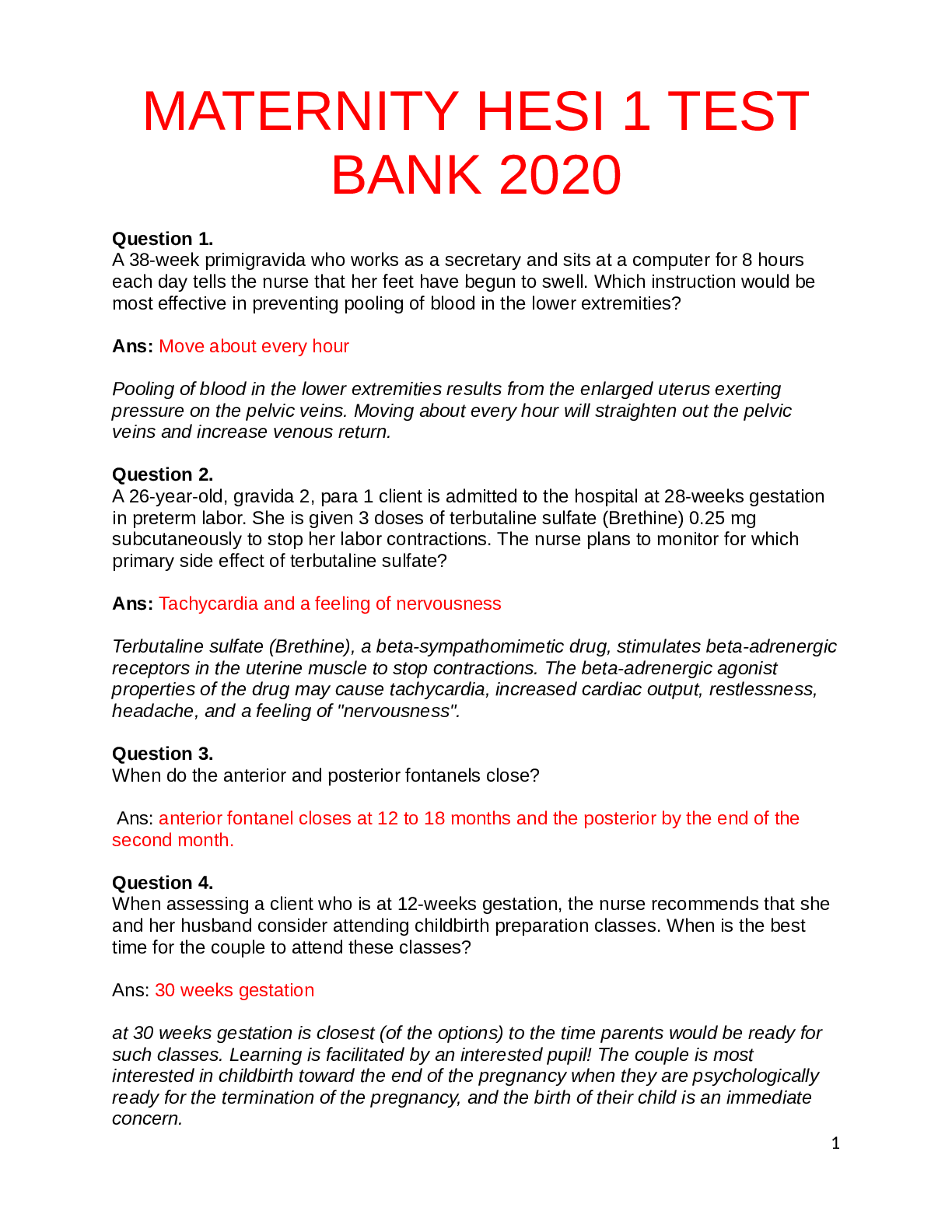
.png)
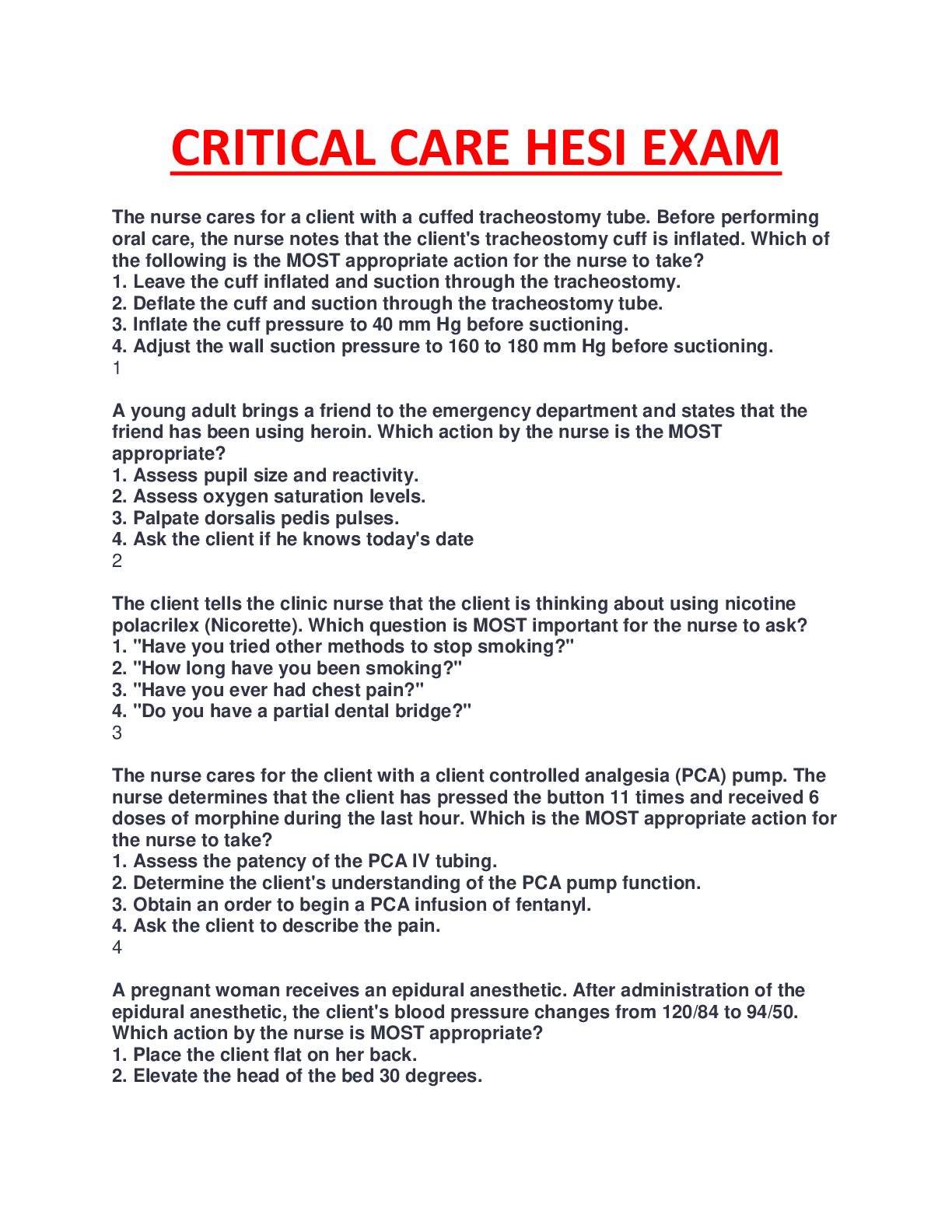
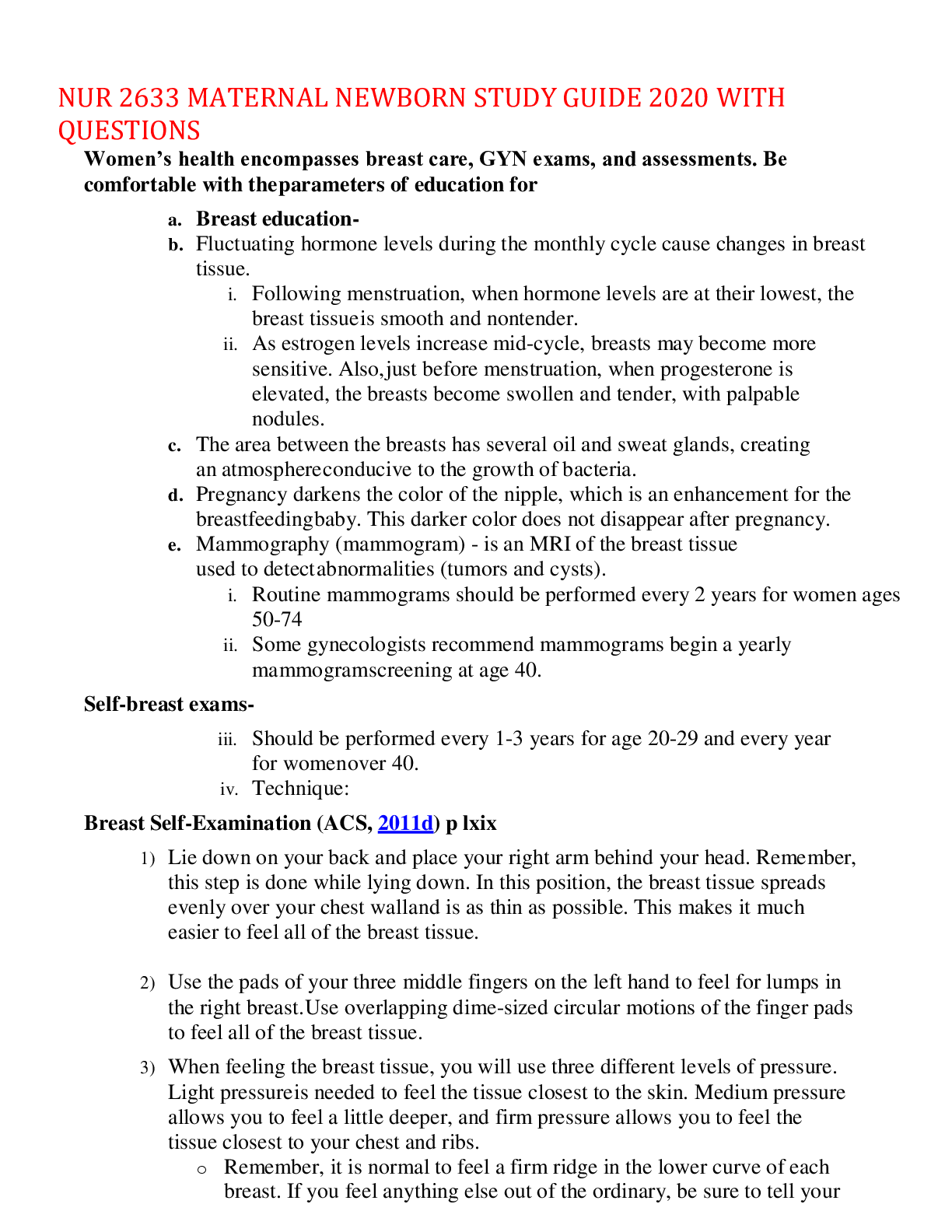
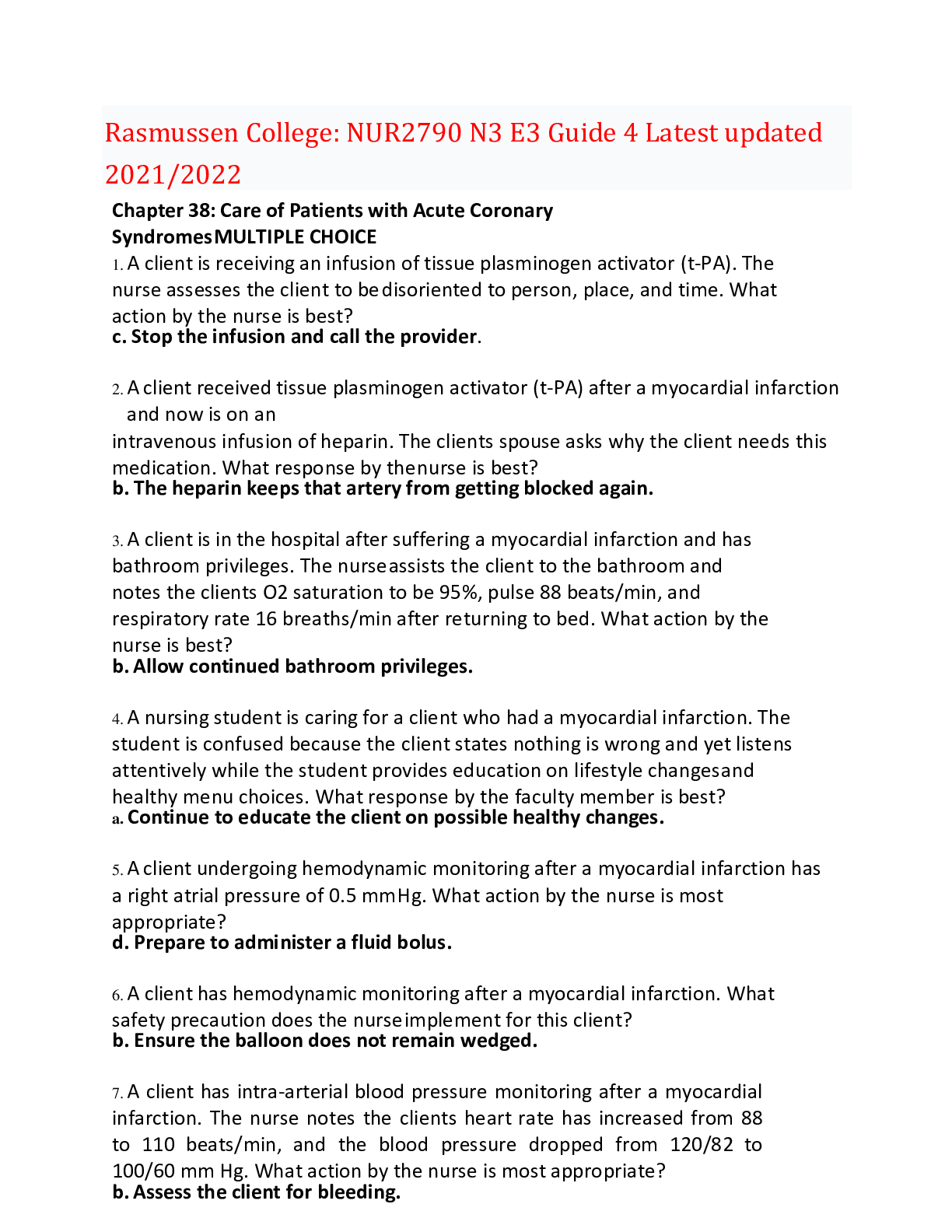

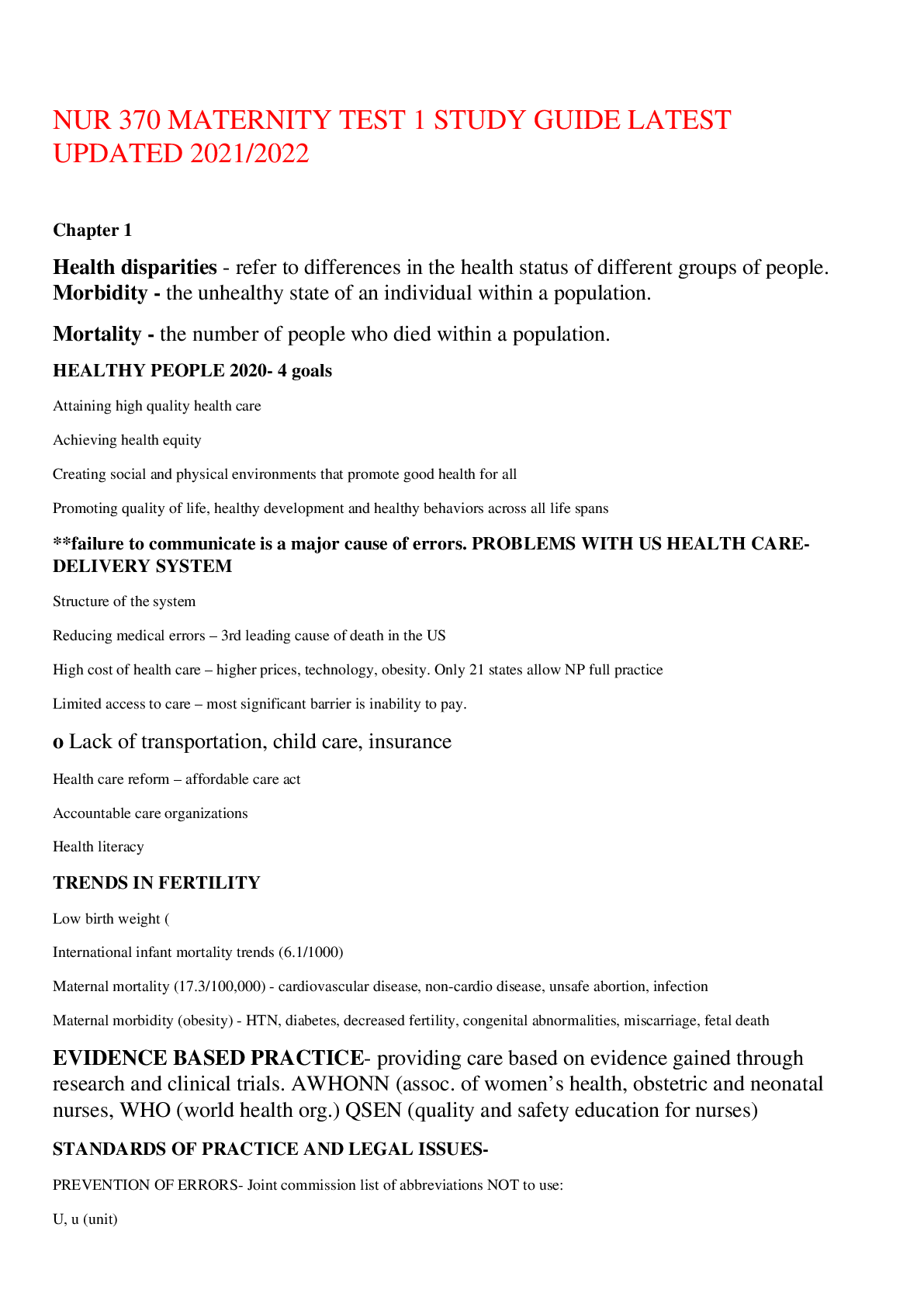
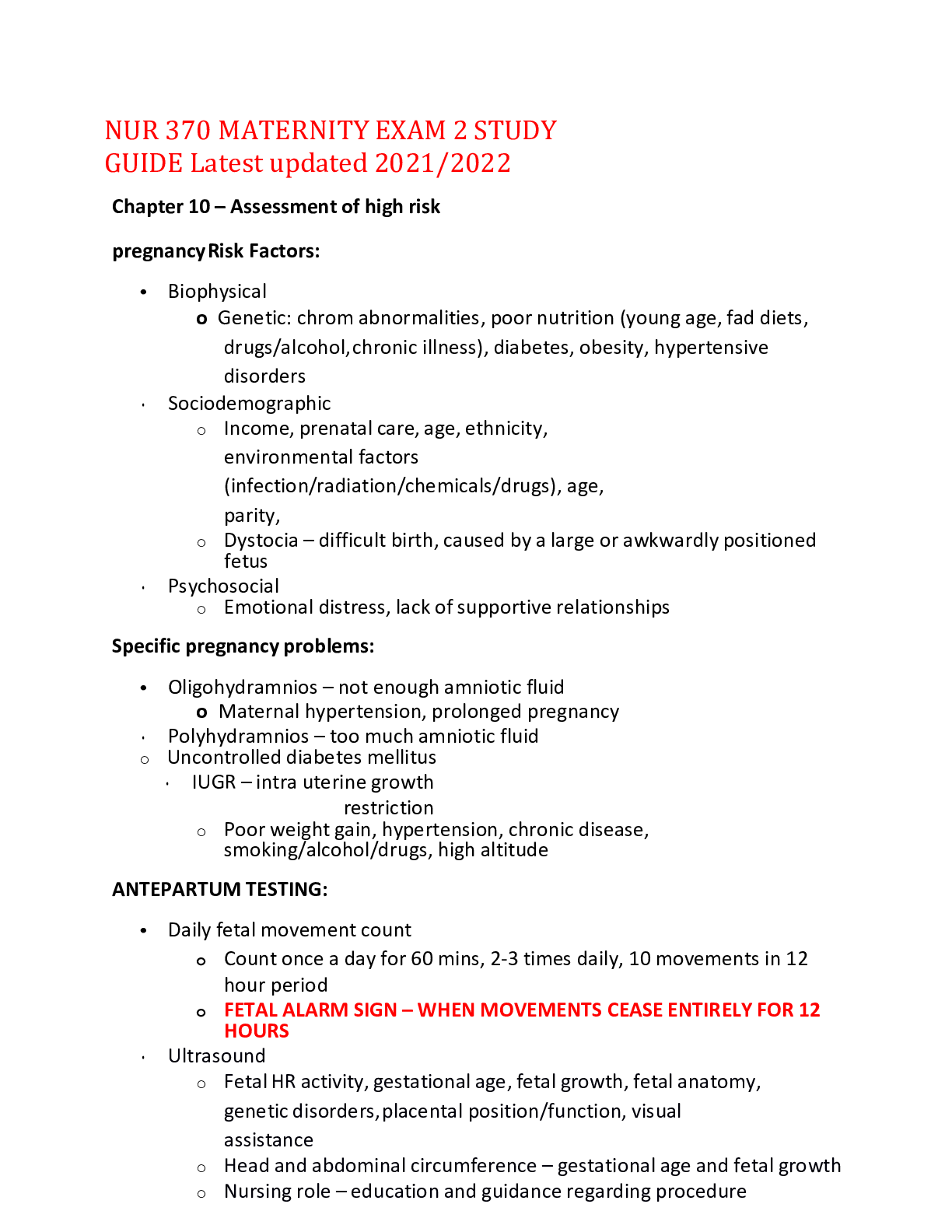
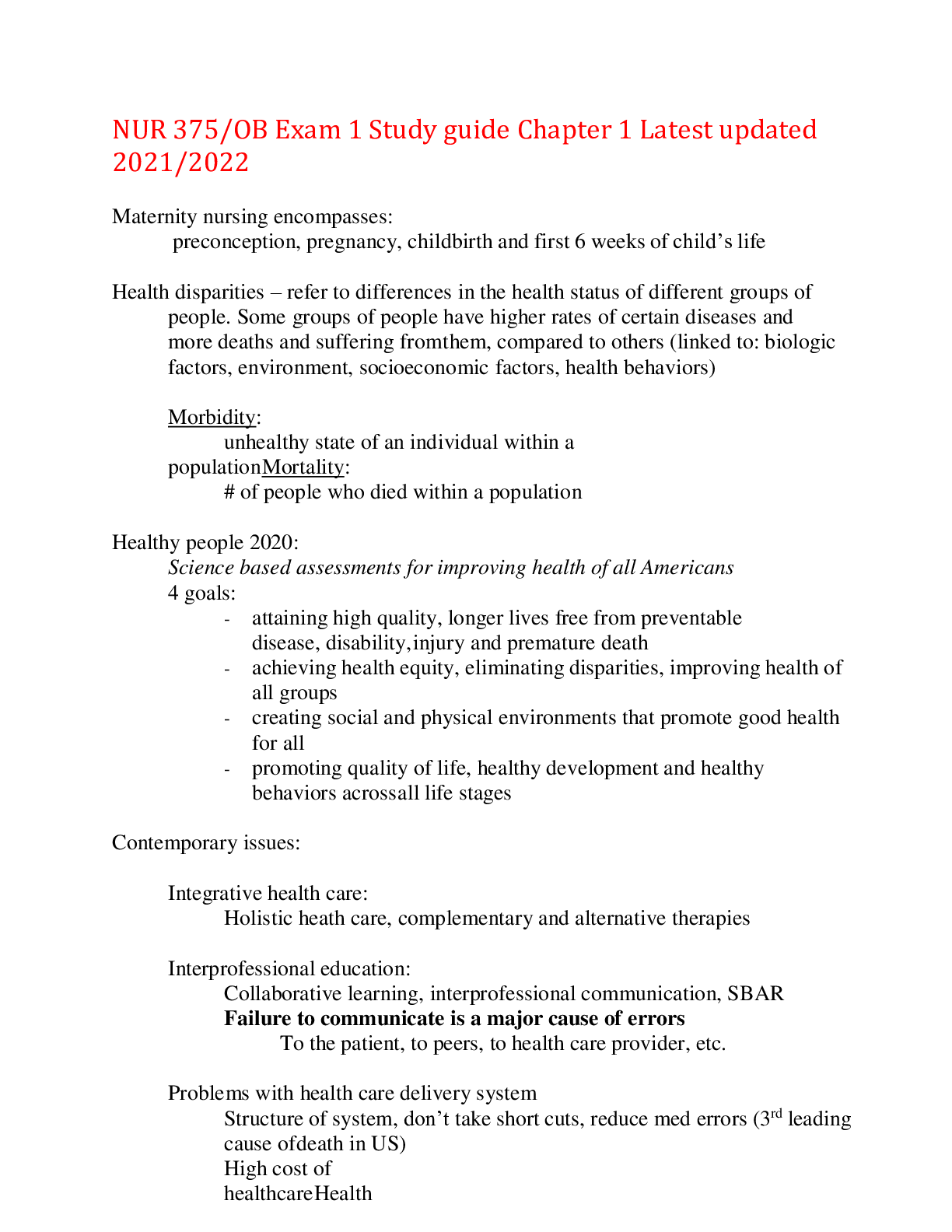
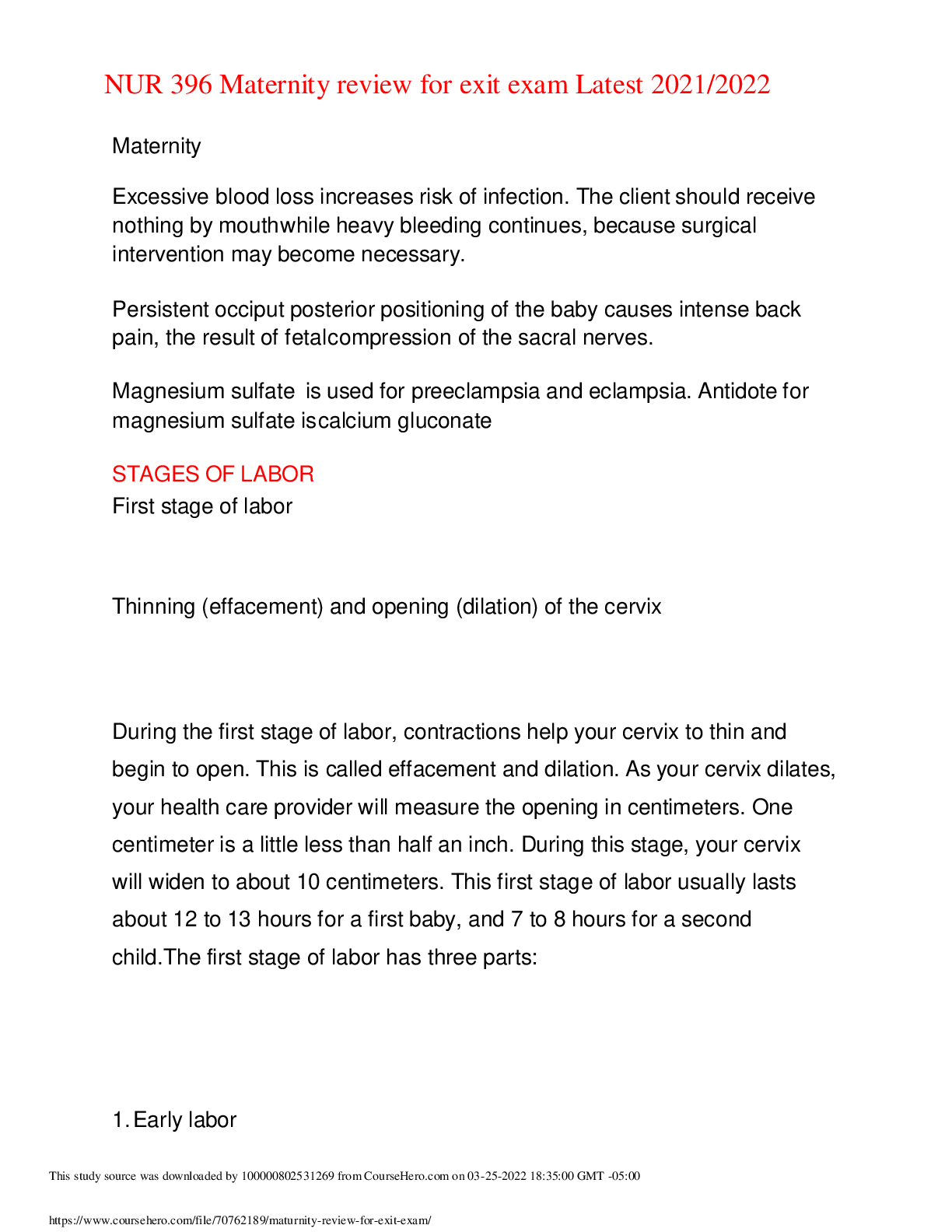
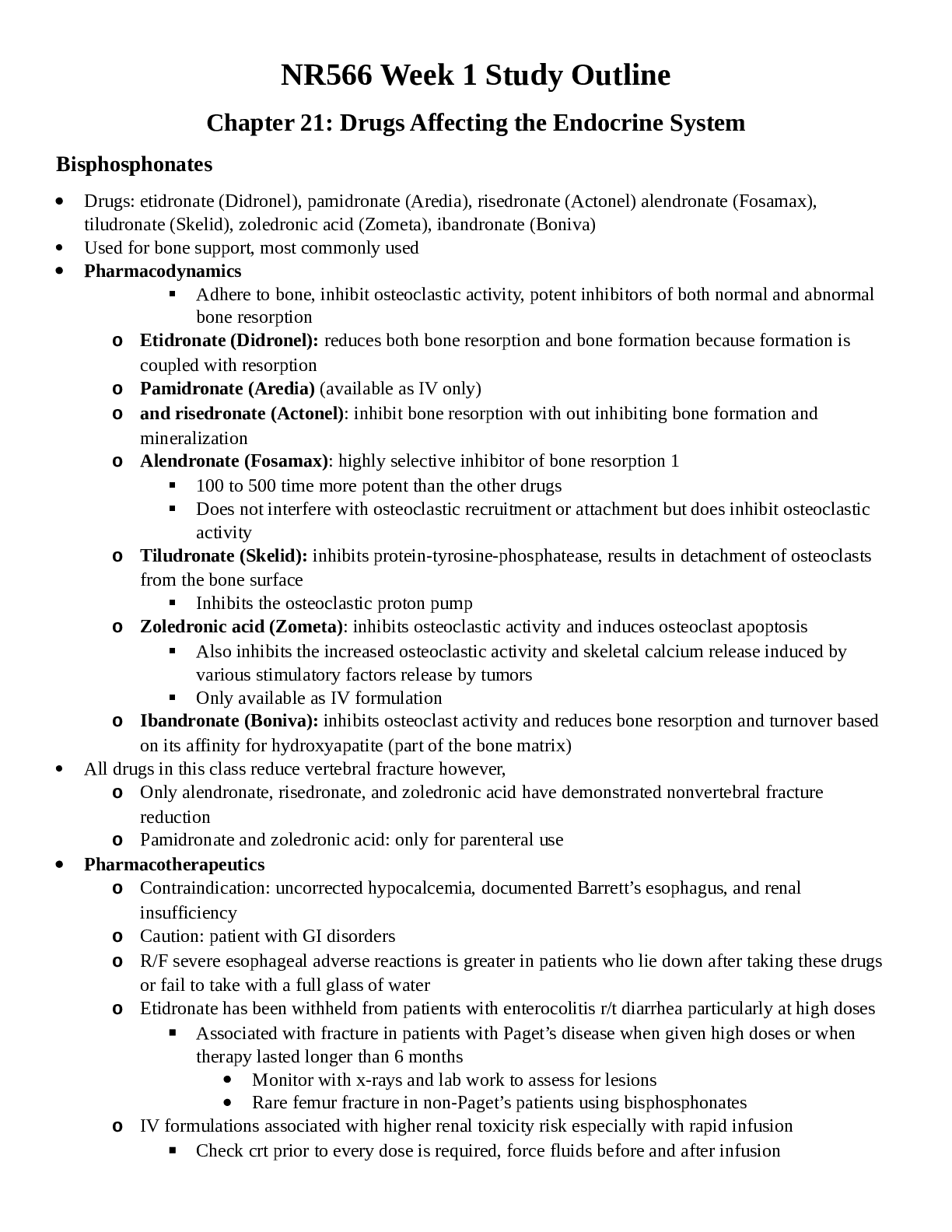
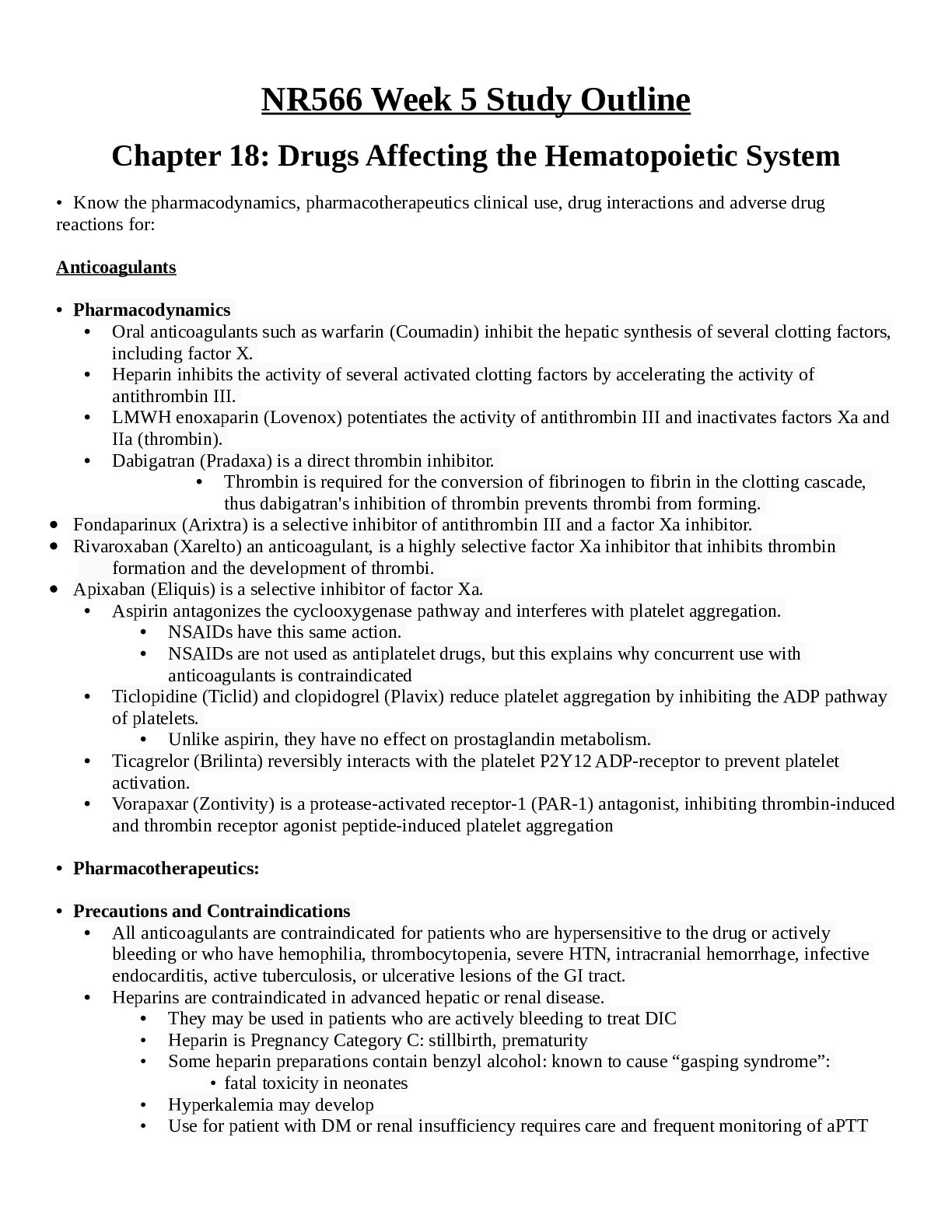
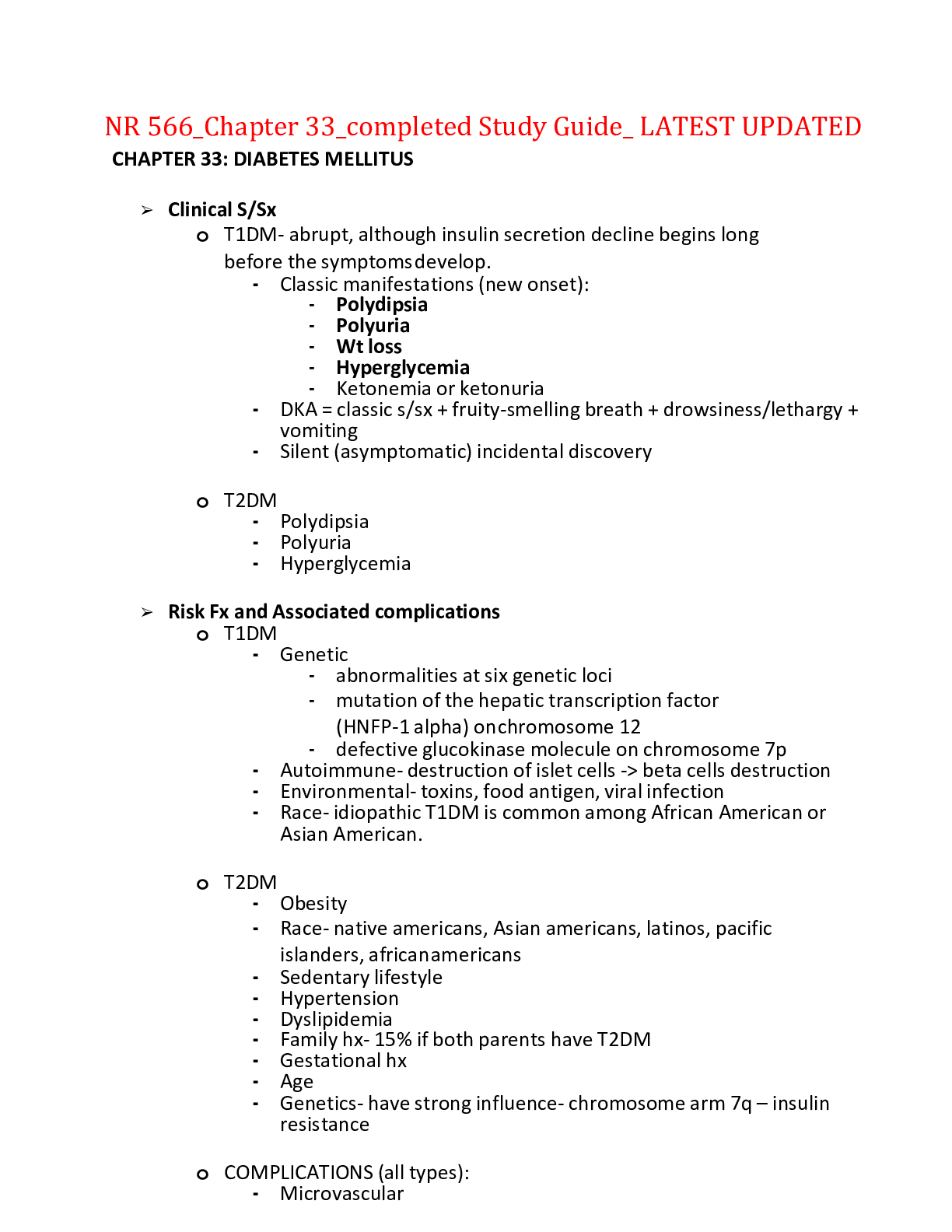
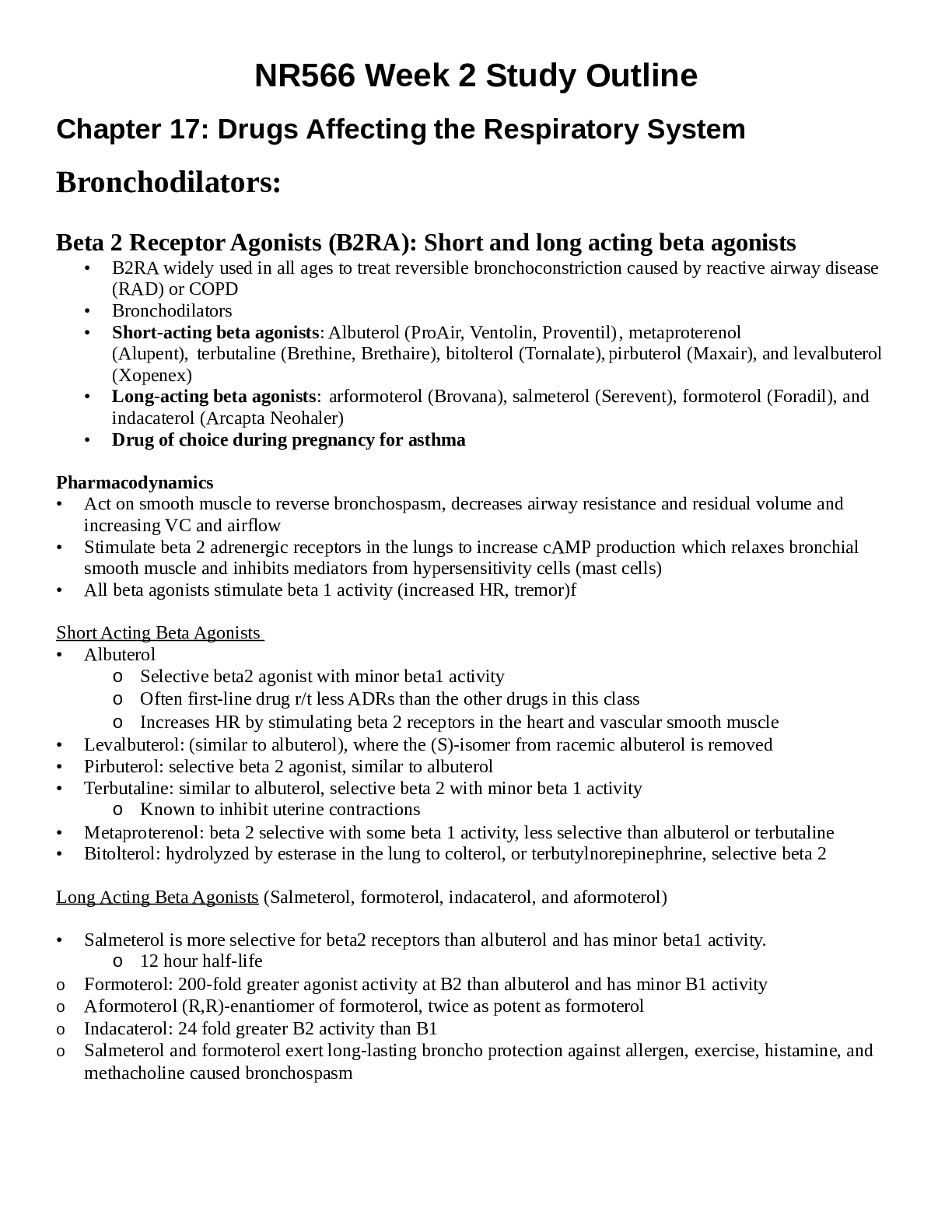
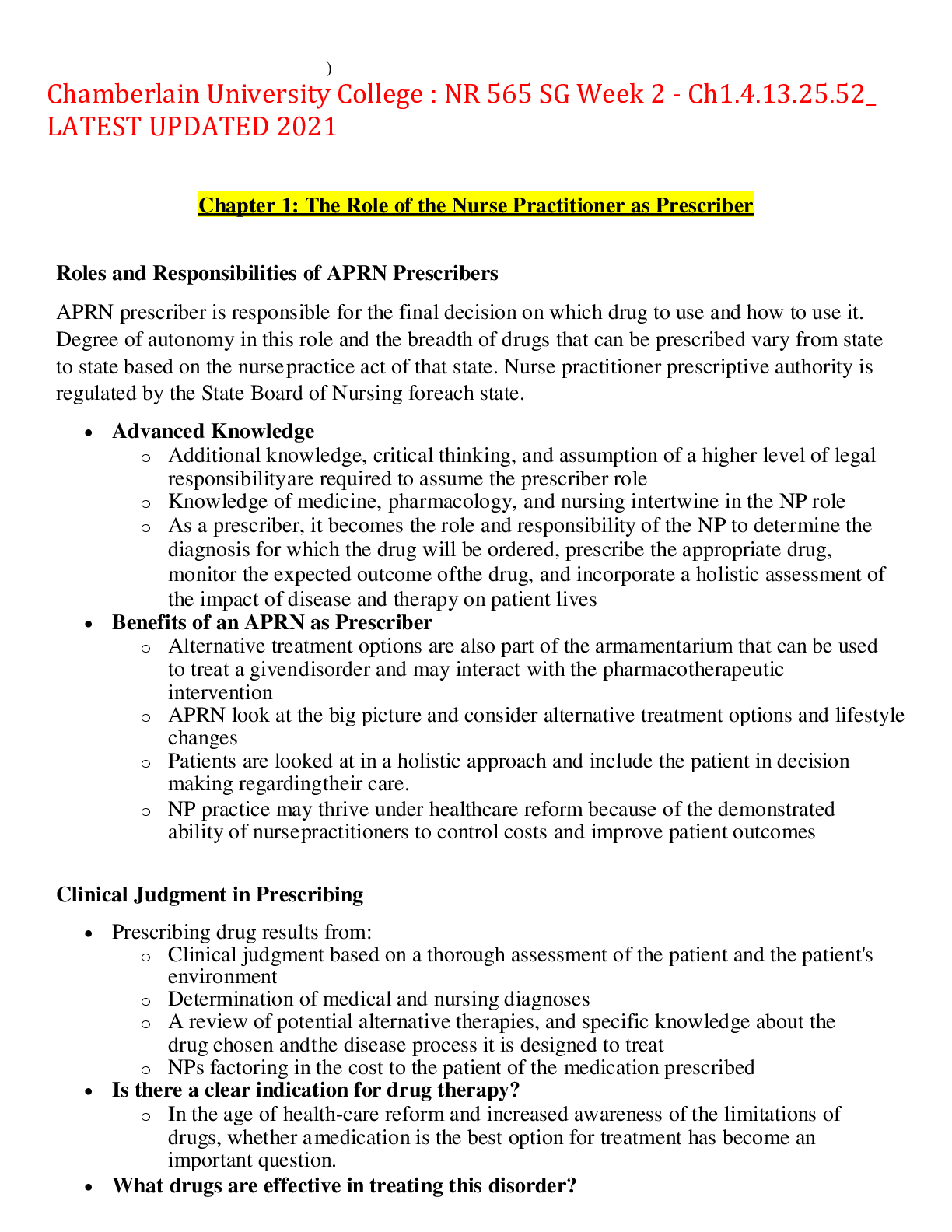
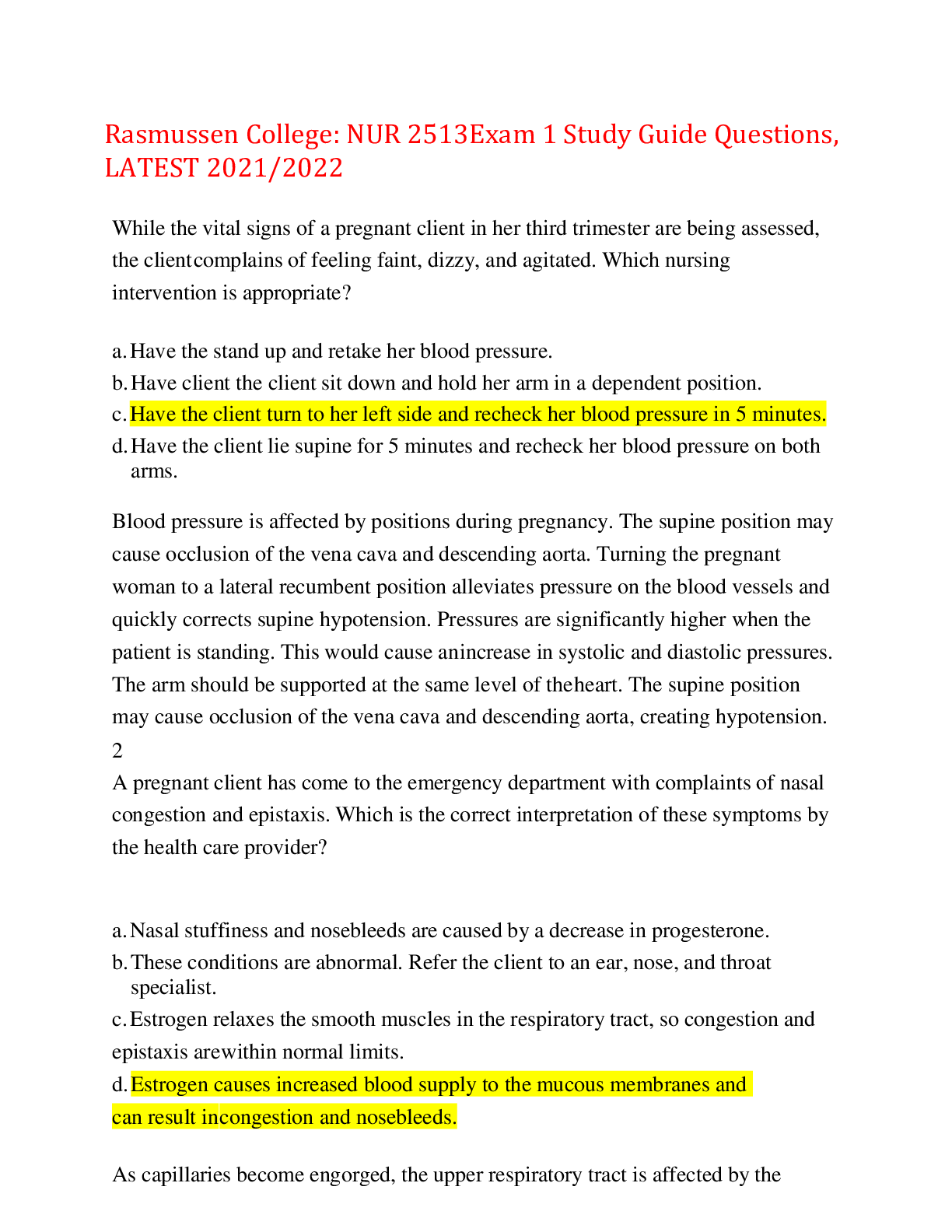
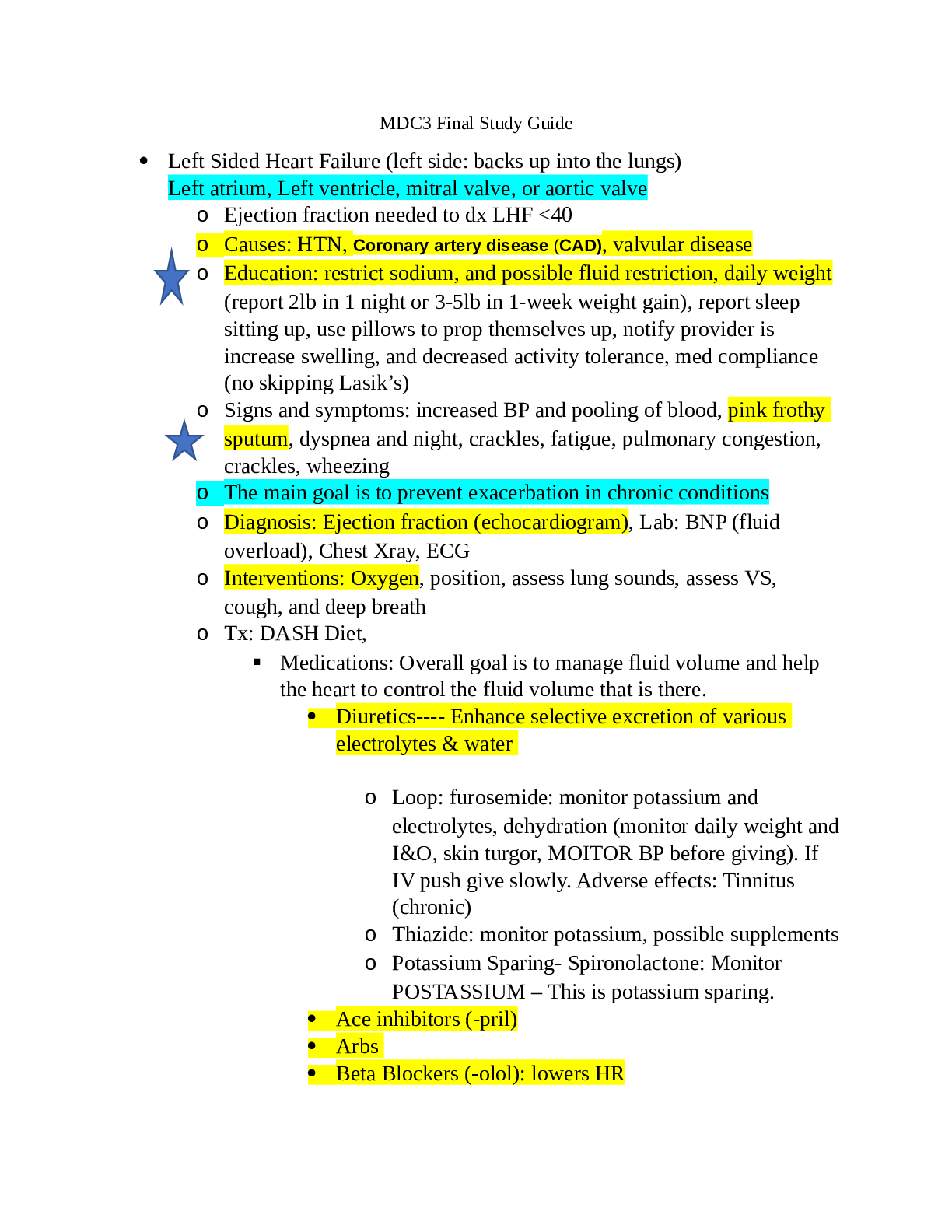
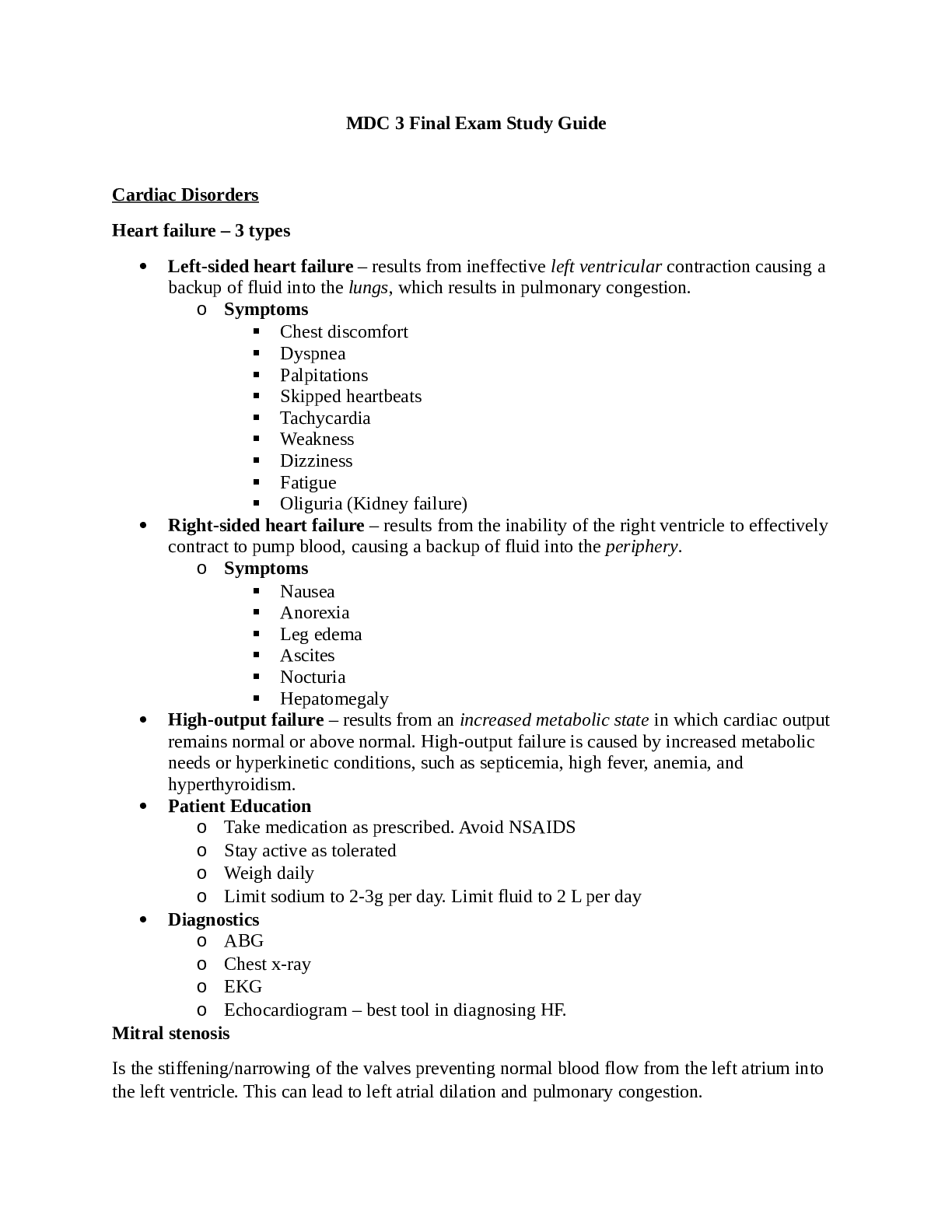
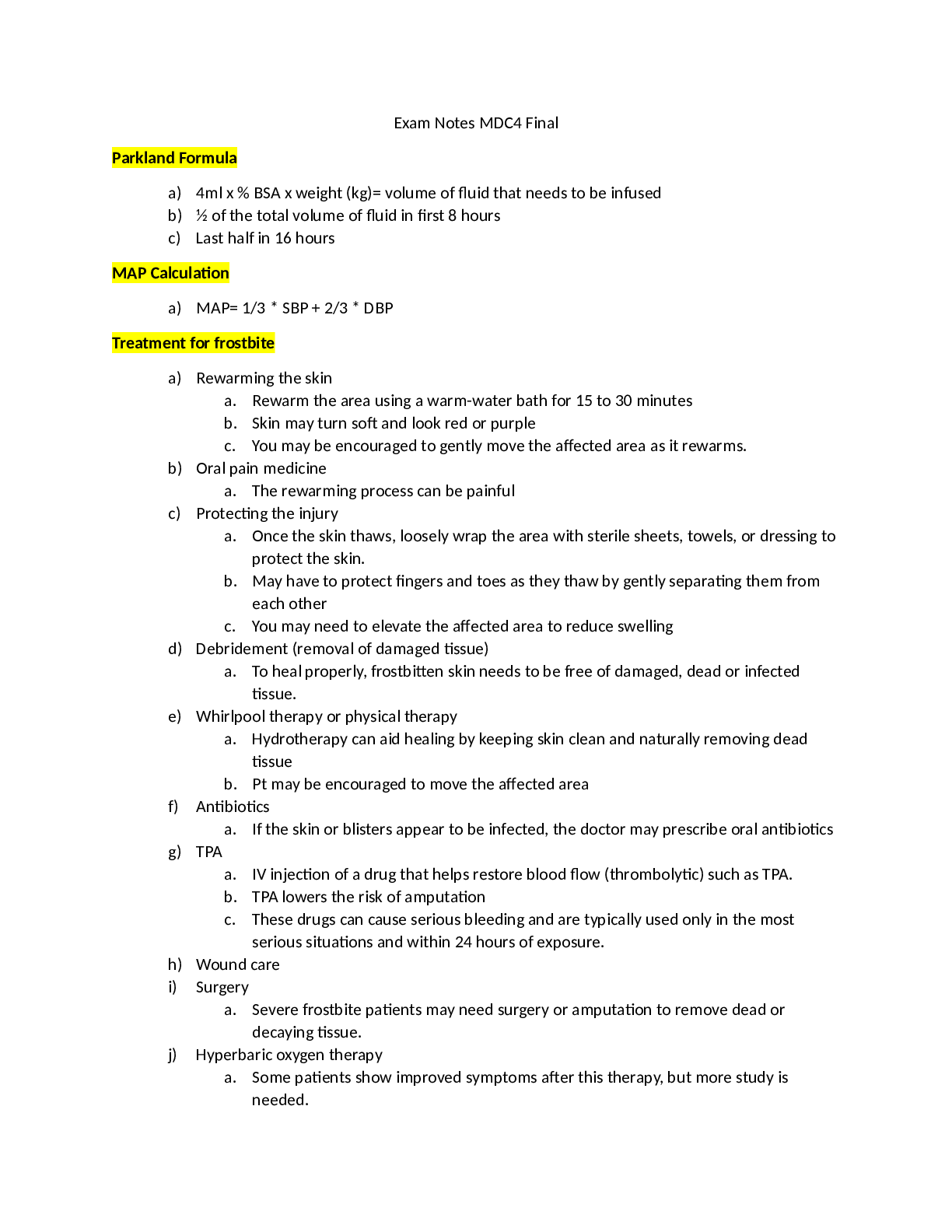
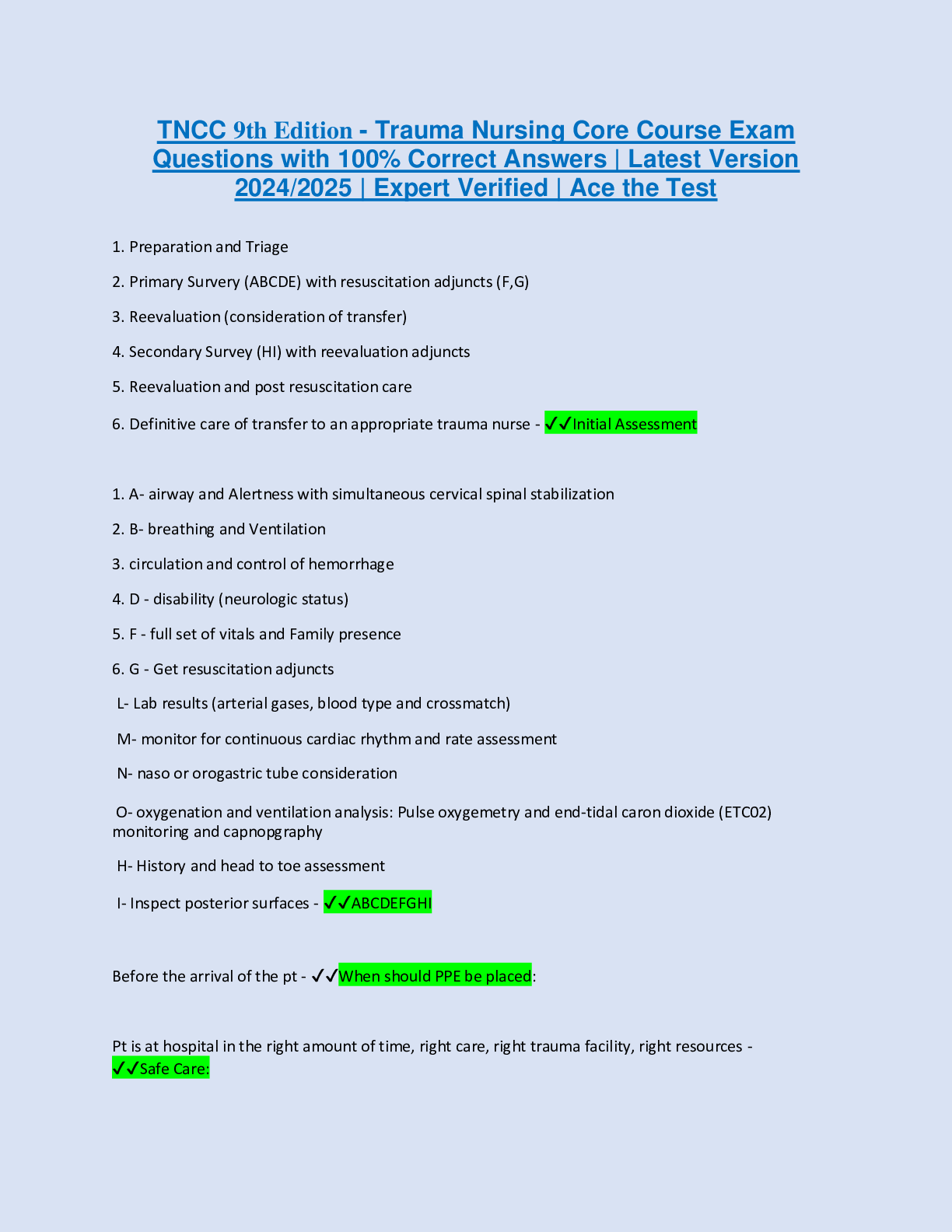








.png)




